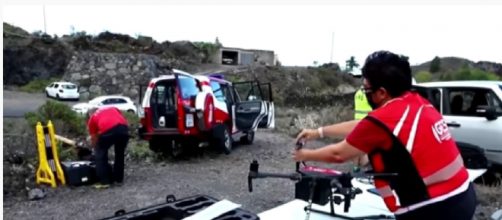A natural disaster like a volcano can happen anywhere in the world. It leaves a permanent mark on the environment in the form of molten lava that solidifies to transform into an endless landscape feature. Moreover, the ensuing fire and heat damage the greenery. The volcanic ash pollutes the atmosphere and can cause severe breathing problems apart from health hazards. The molten lava hampers travel in the region and isolate communities. The Cumbre Vieja volcano on the island of La Palma in Spain erupted Sunday after a buildup of seismic activity that lasted a week.
It prompted the authorities to prioritize evacuation for the residents as the molten lava flowed towards their homes.
According to the Canary Islands Volcanology Institute, it last erupted in 1971. The region had been experiencing mild earthquakes, and scientists maintained a close watch on the developments. Mariano Hernández is the president of La Palma Island. He told a media section that there are no immediate reports of injuries or loss of lives from the eruption. He added that there was more than one point of explosion. Two of these were spewing magma.
The volcano erupted at the Cabeza de Vaca
The location of the eruption in the Canary Islands was Cabeza de Vaca. This is on the western slope of the volcanic ridge as it descends to the coast.
The flow of lava was towards houses in the village of El Paso. It posed a danger to the locality, and Mayor Sergio Rodríguez arranged the immediate evacuation of the people from the danger zones. He sent them to the El Paso soccer field. There was a closure of roads, and the advice to the people was to avoid the area. NBC News adds that the island of La Palma has a population of around 85,000. It is one of several islands in Spain's Canary Islands archipelago.
Duration of an eruption of the volcano is unpredictable
Experts of the National Geology Institute of Spain are unable to predict how long the eruption would last. Previous eruptions on the Canary Islands lasted for a considerable time and went on for weeks or even months.
An underwater eruption on the Canary Islands off the coast of El Hierro Island in 2011 lasted for five months. NBC News mentions that Prime Minister Pedro Sánchez of Spain put on hold his trip to New York to attend the U.N. General Assembly. He traveled from Spain’s mainland to the Canary Islands archipelago. Authorities on La Palma started the evacuation of residents with reduced mobility. Those in nearby localities have been cautioned to be alert and ready to leave if required.
Canary Islands volcano became active
The volcano in La Palma, one of Spain's Canary Islands, has become active. Prime Minister Pedro Sánchez is there to see the situation in La Palma first-hand. He wants to assess the activation of necessary protocols related to such a situation.
The island was already on alert for a possible scenario of this nature after several earthquakes struck over the weekend. It seems the area had thousands of earthquakes in the past nine days. One of these was of magnitude 4.2 on the Richter scale.


